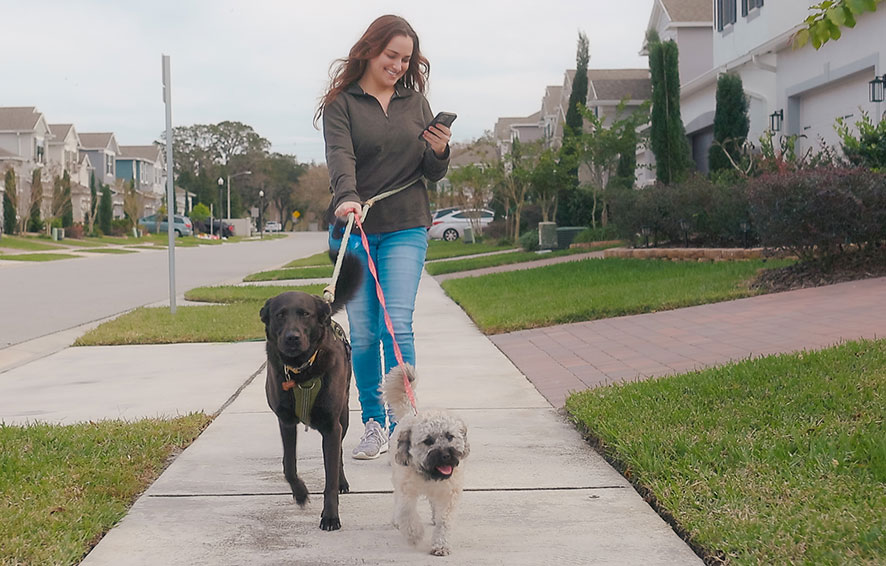Key Takeaways
- There are different processes for working or service dogs to go through for training and certification.
- A dog may be better suited to a certain position based on temperament and personality.
- Service Dogs for America trains dogs for mobility assistance, emergency medical response, PTSD care, and to be therapy dogs in facilities.
- The American Disabilities Act provides legal protections for dogs to accompany their handlers in public places.
In some instances, dogs are not only valuable family members, but life-saving aides. Working dogs can be found in military and law enforcement agencies worldwide, but also in hospitals, schools and citizens’ homes as service and therapy dogs. There are several important differences between service dogs, therapy dogs, and emotional support dogs, but all have important jobs that save lives.
According to service dog education group Please Don’t Pet Me, “Differentiating between, service dogs, therapy dogs and emotional support animals is not a matter of splitting hairs or political correctness. Each of these dogs has a very different job from the others and the terms are not interchangeable.” It’s important to note that many service dogs also double as emotional support for their handlers or pet parents, who they spend 24/7 with and rely on for essential tasks. However, although a pet may have some informal training in service-oriented tasks, that does not make him a “service dog” in the eyes of the law.
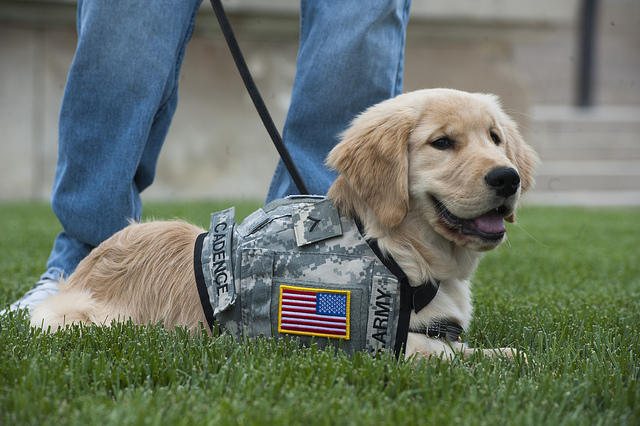
1. Training
The most important factor in differentiating a service dog is training. Highly trained from six to eight weeks old, service dogs undergo rigorous individual instruction to learn disability-specific tasks. For example, a service dog for a paraplegic person would be trained to retrieve dropped objects or assist getting in and out of a wheelchair. Extra care is given to the dog’s temperament and personality; a calm, intelligent, fast-learning pup is the perfect candidate for a service dog.
Emotional support dogs, on the other hand, need no specific training. The only requirements for obtaining one is a verifiable disability, along with a explanatory note from your physician or other mental health professional.
Therapy dogs are usually required by businesses and institutions to become certified or registered with an organization like Therapy Dogs International (TDI), which involves passing a test simulating real-world situations dogs will encounter. It’s important for a therapy dog to be very sociable and friendly, as their tasks mainly involve being petted and providing a calming presence – what a rough life! In addition, most therapy dog certification groups require basic to intermediate obedience lessons, with more specific requirements for places like hospitals and schools.

2. Legal Rights
Under the American Disabilities Act (ADA), service dogs are allowed to accompany their handlers in public places, even restaurants. Various other laws also protect the rights of service dogs and their handlers; the Air Carrier Access Act prevents discrimination by airlines, and the Fair Housing Act prevents landlords from charging pet fees.
Therapy and emotional support dogs are not covered by the ADA, so businesses aren’t legally required to allow them inside if they have an existing no-pets policy. However, emotional support animals are encompassed by the Fair Housing Act Amendments (FHAA) and Section 504 of the Rehabilitation Act, which require landlords to make “reasonable accommodations” for those with disabilities, including allowing pets in non-pet units. Because therapy dogs are usually not providing emotional support to their pet parent, but to others in nursing homes, children’s hospitals and schools, they are excluded from the FHAA. Institutions that work with therapy dogs typically have their own separate rules and requirements.
3. Certification
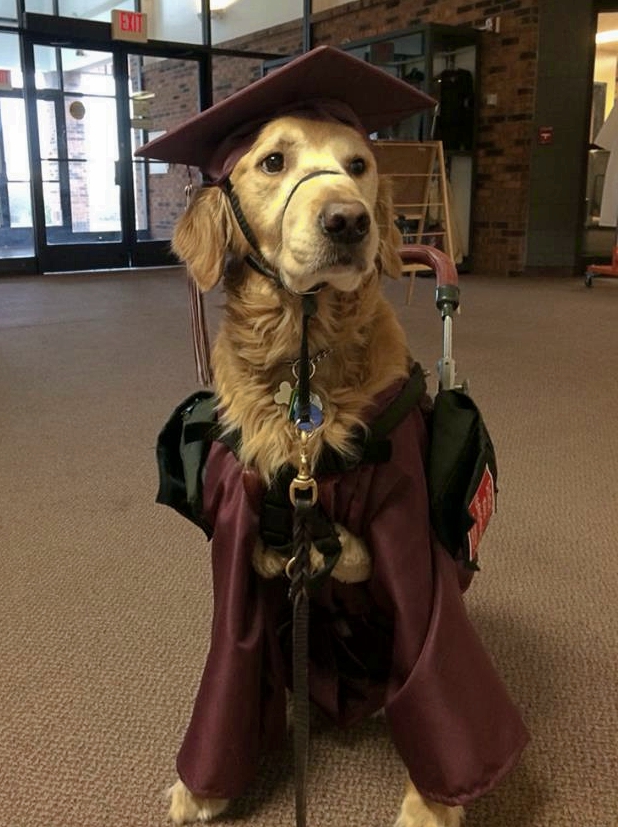
Although there are many websites claiming to provide certification for emotional support dogs, all you need is proof of your disability, usually in the form of a letter from your diagnosing mental health professional. Landlords, airlines and other institutions like schools or universities will often request a copy of this letter when making accommodations for you, so it’s very important!
There are many different organizations that register or certify therapy dogs. We mentioned TDI earlier, but check out the American Kennel Club’s handy list of every group in the U.S. The certification process for therapy dogs typically involves a test of the animal’s obedience and temperament as well as the handler’s abilities.
Service dogs commonly wear bright or reflective vests, collars or leashes indicating their status. Surprisingly, the ADA does not require any kind of registration or certification for service dogs – beware of websites ending in official-sounding .org’s claiming to provide these services! Many service dog training programs do issue certificates, but these only attest to the dog’s having passed a test and are only recognized by certain non-government organizations or for travel purposes.
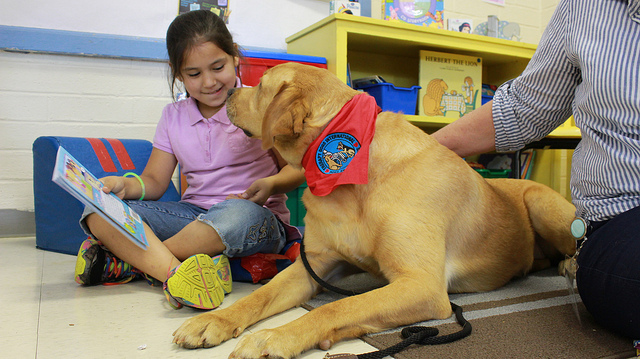
4. Temperament and Personality
Therapy dogs are the friendliest pups you’ll ever meet. An affectionate, easygoing dog with no aggression or fear issues is the ideal candidate for a therapy dog. The ability to get along with everyone is essential, as the animals can meet dozens of humans on the job in settings like nursing homes, hospitals and schools.
Desirable characteristics in an emotional support dog are similar to those for therapy dogs, with a few exceptions. Most people seeking a dog for emotional support are looking for a loyal, highly-bonded pet; therapy dogs are more indiscriminate with their affection. Some dogs are very in-tune to their human’s emotions, even trying to hug or kiss a distraught person.
Service dogs must remain stoic in loud or intense situations, like on busy streets or crowded coffee shops. Adaptability to a wide variety of situations is a must-have. Depending on the disability of the handler, some dogs must have good physical strength to help with wheelchairs, while others are trained to recognize medical situations and alert others. PTSD service dogs are skilled at distracting handlers from stressful environments and keeping them calm.
5. Jobs
Emotional support dogs are tasked with maintaining the mental wellbeing of their pet parents, usually through their calming presence and affection. The mental health benefits of dogs and other animals are well-documented in studies. Some pet parents may take their emotional support dogs with them to public places, but if asked to leave because of a no-pet policy they must comply – only service dogs are covered by the ADA.
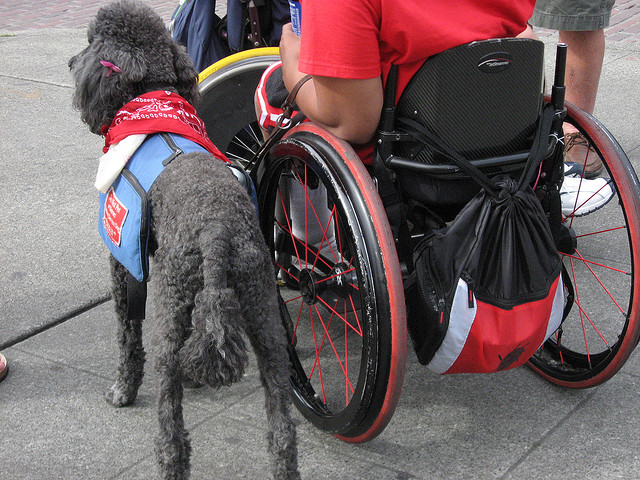
There are different kinds of service dogs for different disabilities. Service Dogs for America trains mobility assistance dogs, emergency medical response dogs, PTSD dogs, and facility dogs. Mobility assistance dogs help individuals who cannot move independently – like those in wheelchairs – by pushing buttons, opening doors, retrieving objects, and even turning off lights. Emergency medical response dogs are placed with those who have chronic medical conditions like epilepsy and diabetes, sometimes detecting seizures before they even occur. PTSD dogs are especially intuitive, even gently waking their humans from night terrors; they also bring medication and create personal space in crowds for the claustrophobic. Service dogs who work outside the home are called facility dogs, tasked with routinely visiting people at schools, nursing homes and hospitals.
Therapy dogs are also called facility dogs; the two can overlap, but some organizations – like TDI – prohibit an animal from being both a service and therapy dog. In recent years therapy dogs have frequently visited colleges and universities during finals weeks, relieving anxiety in students who are often pet-less far from home. The job of therapy dogs is simply to sit and comfort individuals, often the sick or elderly.
(Featured image via Flickr.com/kennedylibrary)



